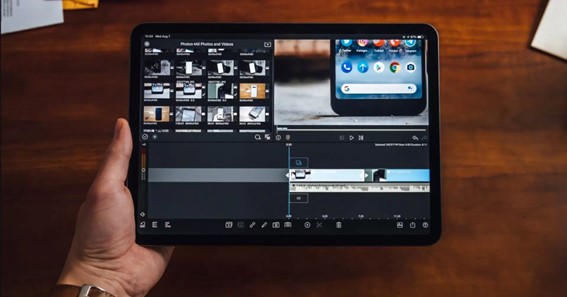The post-production phase begins once a shoot is over. This process, like filmmaking, necessitates an excellent blend of artistic ability and technological know-how. Each editor’s unique style helps them tell stories how they want.
What is Video Editing?
The video editing process is like carving an artwork out of a block of stone, chipping away unnecessary sections, and smoothing over rough edges. In many cases, the process of editing a video is more significant than the shoot itself.
However, trimming footage is simply one aspect of video editing. You can also improve the content by enhancing the colors, lighting, and transitions and adding music, sound effects, and captions.
5 Simple Video Editing Hacks for Beginners
- Choosing the Right Software
Selecting the right video editing software is the first step in developing a workflow. We must opt for software that meets our needs and preferences. Adobe Premiere Pro, DaVinci Resolve, and Final cut pro are popular video-editing software.
- Getting the Right System to Edit
Choosing a good PC is key to an excellent video-editing workflow. Further, multiple color-calibrated displays can be game-changing. Hard drives are crucial for storing raw video files without putting pressure on the computer’s internal storage.
- Creating an Engaging Storyline
It is unnecessary to shoot extra scenes and piece together the plot without an idea of how the finished product should look. We must skim through the shot footage before editing to save time and effort. In the case of fiction content, the shoot is more structured with a pre-determined storyboard or script in place.
Click here – How Outsourcing Improves the Quality of Your Medical Writing?
- Maintaining an Efficient Workflow
A fast computer and cutting-edge software are two primary prerequisites of any video editing project. However, being meticulous and structured is essential too.
Organizing tasks and data in reusable folders are tricks that will help improve our workflow. It would help to create folders for various components of video edits, like video and audio files, images, graphics, etc.
Creating a file structure for the project can help us edit films faster by reducing the time spent hunting for footage. Over time, editors learn to utilize shortcuts and macros to boost productivity. Getting workflow right is essential for providing efficient video editing services.
- Ensuring Viewer Retention
With the attention span of viewers reducing, it is essential to keep the audience hooked to their seats. Audience retention is the most crucial thing that will determine the success of a video.
A skilled video editor will ensure the storyline is executed perfectly while maintaining retention throughout the video.
- Colour Correction
Colour is a powerful tool that may draw attention to essential details, elicit desired feelings from viewers, and establish the visual tone of the video. Thankfully, modern video editing software allows us to play with colors in more ways than one.
- Knowing When to Cut
Cuts and transitions must flow seamlessly without creating visual disruptions. While transitions separate one cut from the next, they must remain invisible. Hence, Video editors must use transitions in a manner that they disturb but take the storyline forward smoothly.
Utilizing creative design services at this stage might be a great idea, depending on the scale of the project. Outsourcing edit services will ensure that the video is finished within the specified deadline by skilled, professional video editors.
- The Magic of B-Roll
While A-roll is the primary footage used in production, B-roll is the secondary footage used to supplement primary footage. To create visual variation and break the monotony of watching the same shot play out for long, we must use b-rolls whenever necessary. Knowing when and what to use as B-roll is a skill worth having.
- Treating Shaky Footage
Shaky footage may be just as fatal to a project as lousy audio. Fortunately, excellent plug-ins and tools can assist us in stabilizing the film. Knowing these plug-ins and hacks inside and out could prove pivotal.
- Getting the Audio Right
No matter how aesthetically pleasing the shots are, the poor audio quality will stop us from communicating the message efficiently. Audio leveling is done at the final stage of editing, though it’s possible to include music or sound cues at earlier stages, if needed, to manage quality control.
Once we finish working on the visual elements, the editing job will involve fixing the audio and musical aspects of the production.
Click here – What are the tips to be followed while purchasing a flat in downtown Dubai?





